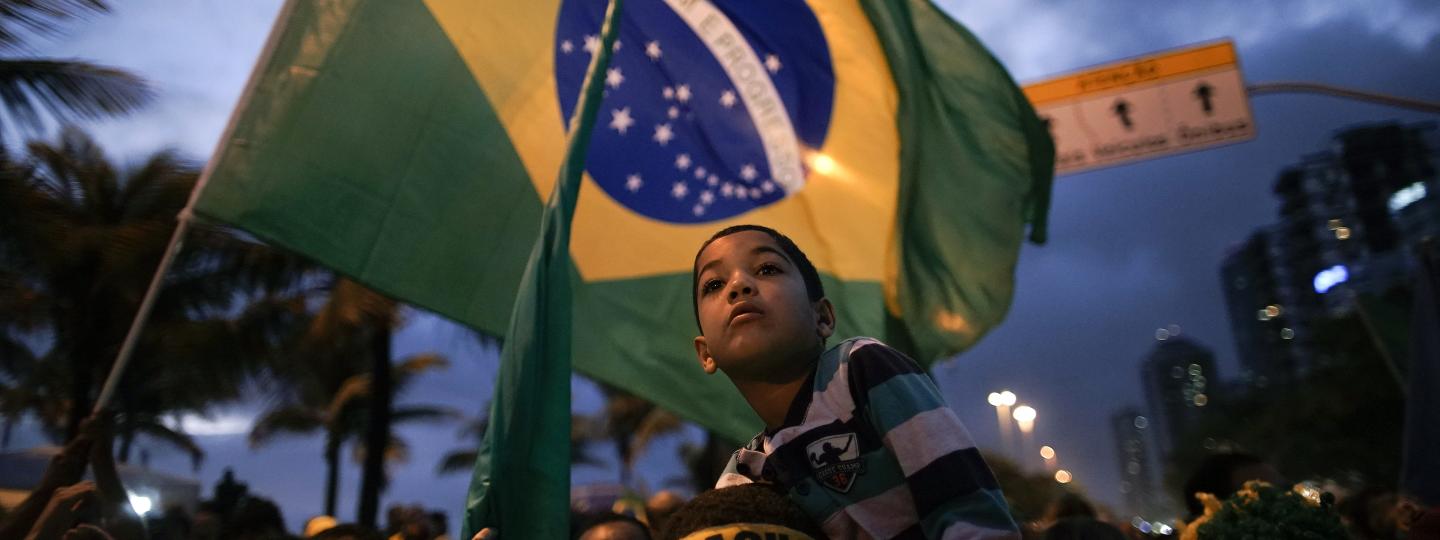In the lead-up to Brazil’s contentious presidential election, which Jair Bolsonaro won Sunday, plenty of rumors, doctored images and fake news stories made the rounds on social media.
Their form on platforms like Facebook and Twitter is well-documented, from conspiracy theories about the death of a politician to a rosary from Pope Francis. But what kinds of hoaxes were shared the most on WhatsApp, whose encryption makes it nearly impossible to track content?
Using a monitoring system developed by researchers at the Federal University of Minas Gerais in Belo Horizonte, Poynter analyzed some of the top content from the week before the election. It only looks at about 350 public groups, but Eleições Sem Fake is the first platform to quantify the spread of misinformation on WhatsApp, which fact-checkers have long used for surfacing and debunking hoaxes in groups.
“What we have built is a system that monitors public groups,” Fabrício Benevenuto, an associate professor at UFMG, previously told Poynter. “It shows what’s inside these groups. For example, at the top (of the dashboard), you can see an image that appeared in 40, 50 groups in one day.”
RELATED ARTICLE: WhatsApp has been quiet about misinformation in Brazil. So fact-checkers called it out in The New York Times.
The system works by pulling in data from these public WhatsApp groups, which are open to anyone with the link and are often posted elsewhere on the internet. Then the top messages, photos, videos and audio are displayed in a centralized dashboard, which shows users how many groups a specific piece of content has appeared in. Journalists can even run a reverse image search from the platform.
From messages about daylight saving time to videos about Formula One drivers, here are some of the hoaxes that got traction the week before Election Day and were archived by Eleições Sem Fake. They reveal how — in the small corner of Brazilian WhatsApp analyzed by the researchers — election-related misinformation jumped between different social media platforms, was more frequently image-based and tended to concentrate on false claims about voting logistics.
Images
Many of the images that made the rounds on WhatsApp in the week leading up to the Brazilian election had to do with voter fraud, matching a trend that emerged during the first round of voting Oct. 7.
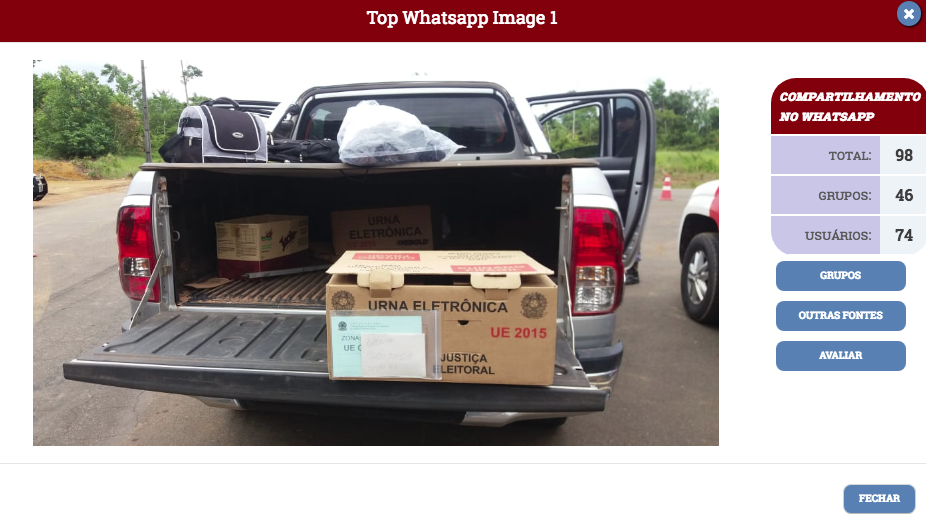
The top image in Eleições Sem Fake’s database from Oct. 22 depicts a box of voting machines in the back of a government pickup truck. According to Agência Lupa, WhatsApp users claimed that three of the four ballot boxes were filled with votes for Fernando Haddad, Bolsonaro's left-wing challenger. The Regional Electoral Court of Amazonas issued a statement saying that the truck does belong to the state, but that it did not detect any irregularities in the voting machines.
The image was shared in 46 groups by 74 users. According to Eleições Sem Fake, screenshots of the image were shared in an additional 117 groups throughout the week.
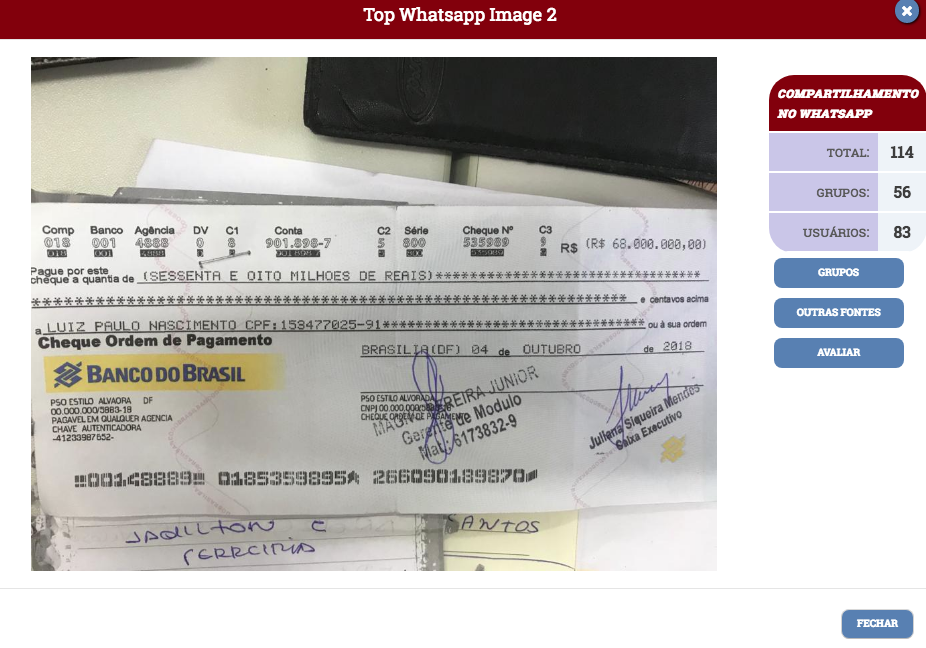
On Oct. 23, the second most-shared image was a check of R$68 million that a gang was supposedly giving to Haddad. But Lupa debunked the photo, saying it was actually a gang scheme to cash in a fake check in the town of Poções — it had no connection to the presidential campaign.
That image was shared by 83 users in 56 groups, according to Eleições Sem Fake. It also garnered more shares throughout the week.
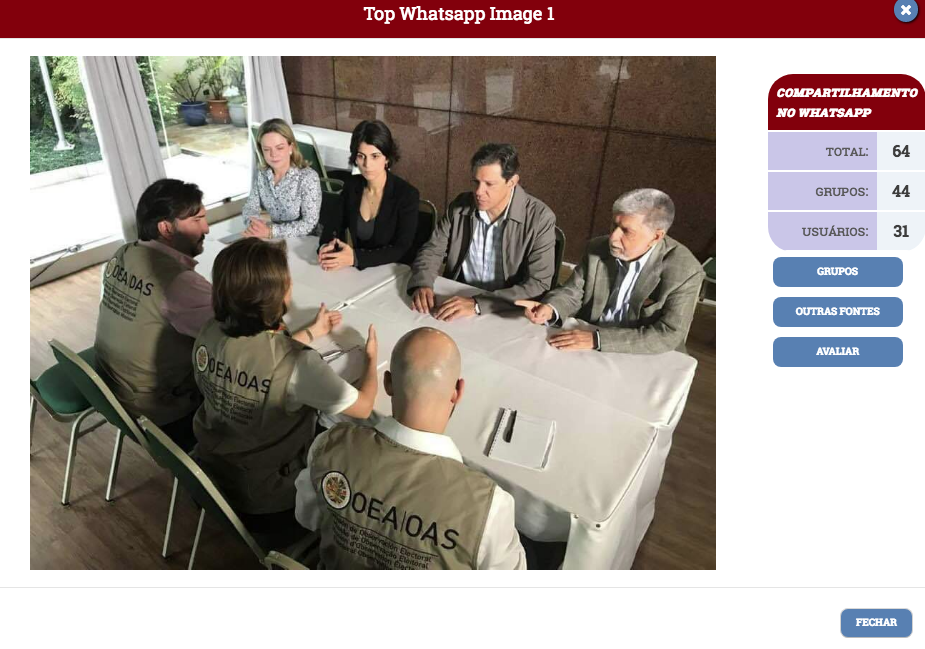
One image from the day before the election claimed to show Haddad in a secret meeting with the Organization of American States, during which they were planning voter fraud. The hoax, which was the No. 1 image on Saturday and appeared in 44 groups, was also reported by users on Facebook.
On Oct. 28, Lupa, in partnership with Argentine fact-checking site Chequeado, debunked the claim, saying that OAS meetings with Haddad and other politicians were made public ahead of time.
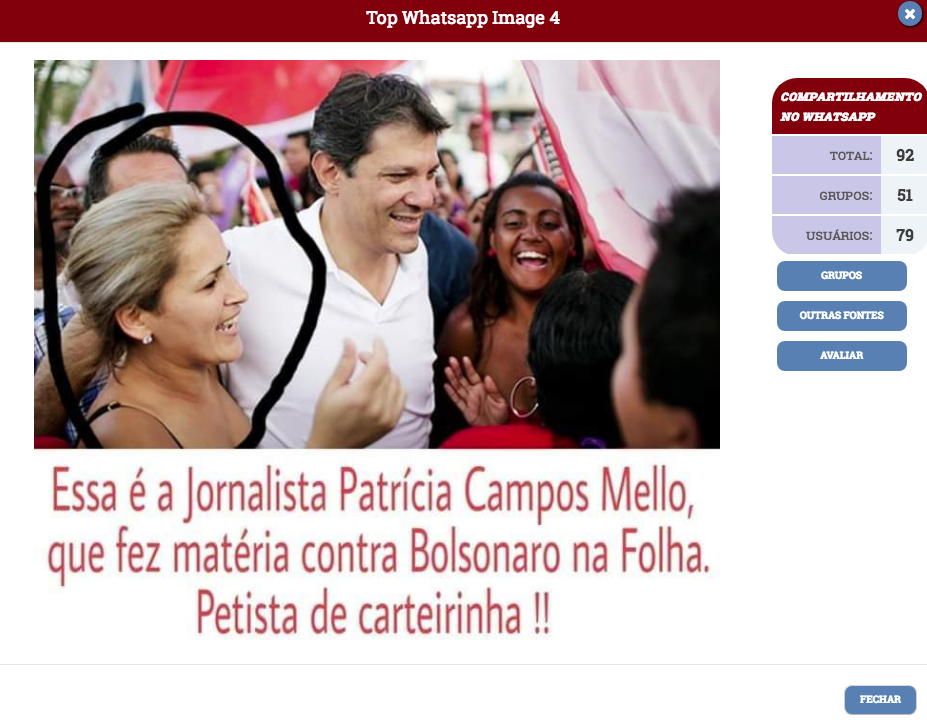
Finally, some false photos went after the media. Another image from Oct. 23, which was the fourth most-shared of the day, purports to show Folha de S.Paulo journalist Patrícia Campos Mello hugging Haddad. The hoax also made the rounds on Facebook, where users flagged the post to its fact-checking partners Lupa and Aos Fatos. (Disclosure: Being a signatory of the International Fact-Checking Network’s code of principles is a necessary condition for joining that project.)
The former site debunked the image Oct. 27; it’s from 2012 and does not show Campos Mello. But it was still shared in 51 groups by 79 users, according to according to Eleições Sem Fake.
Messages
While they got less traction in public WhatsApp groups than images, chain messages also spread misinformation ahead of Election Day.
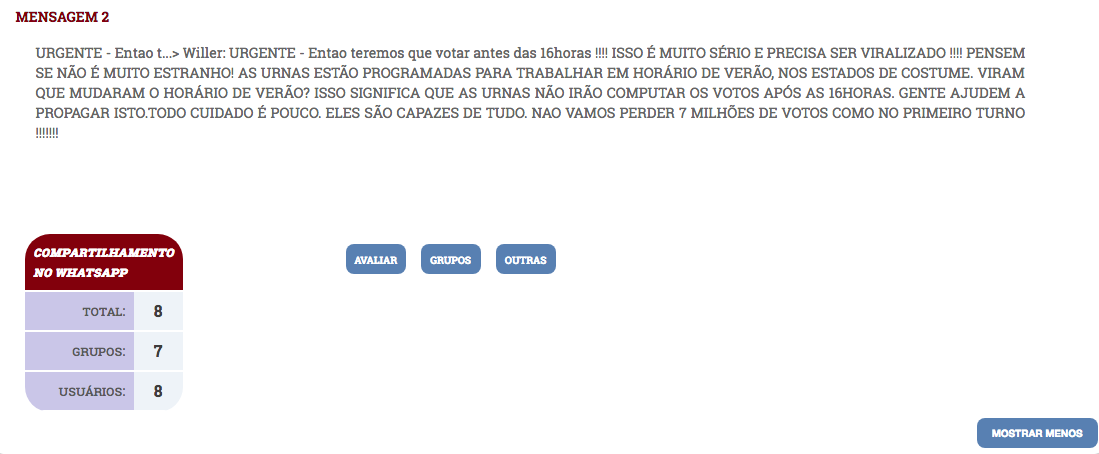
Some had to do with voting logistics. The second most-shared message on Oct. 24 claimed that, because of daylight saving time, votes cast after 4 p.m. would not be counted. The hoax also made the rounds on Facebook, where users reported it to fact-checkers.
Aos Fatos debunked the claim Oct. 28, since daylight saving time in the country doesn’t start until Nov. 4. Eight users shared the chain message in seven groups, according to Eleições Sem Fake.
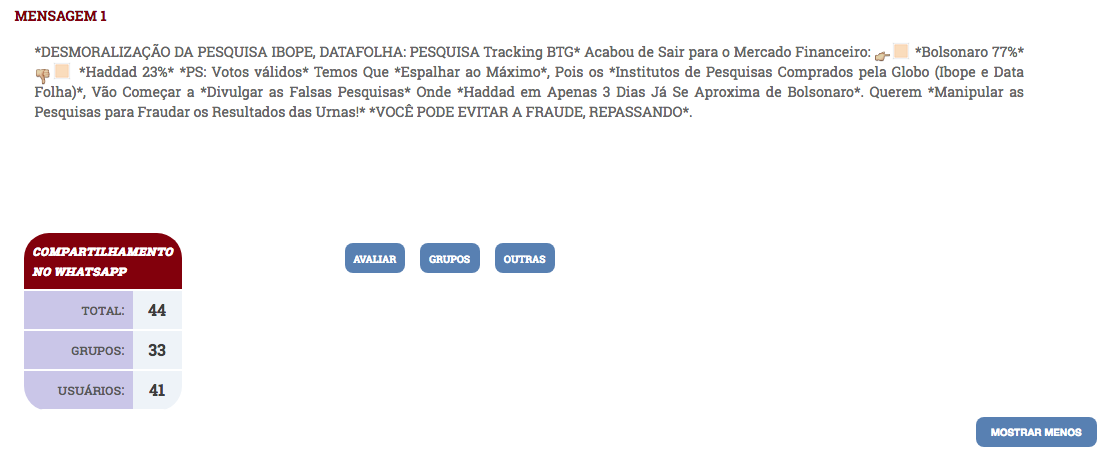
The No. 1 chain message in Eleições Sem Fake’s database on Oct. 26 drew upon a fake poll to forecast Bolsonaro as the winner of the election. According to the hoax, the right-wing candidate would have had 77 percent of votes if blank, null and undecided votes were taken out, while Haddad would only have had 23 percent.
Aos Fatos debunked that message, which was distributed to 33 groups by 41 users, on Oct. 27 — the research didn’t exist. But it still got traction in different forms throughout the week.
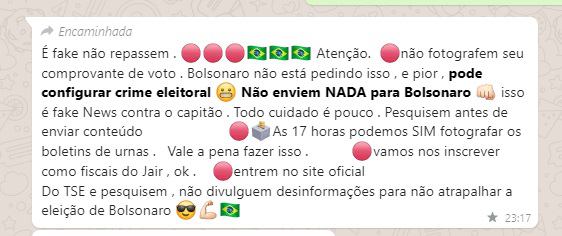
Finally, one chain message — which was not recorded by UFMG’s system but sent to Aos Fatos — claimed that taking photos of voting vouchers, which contain information like a voter’s polling place, is a crime. The fact-checking project debunked that on Election Day; in Brazil, it’s only against the law to take photos within the voting booth.
Video
While much election-related misinformation on WhatsApp went after the usual suspects, there was at least one curveball: a video about the sister of a Formula One driver.
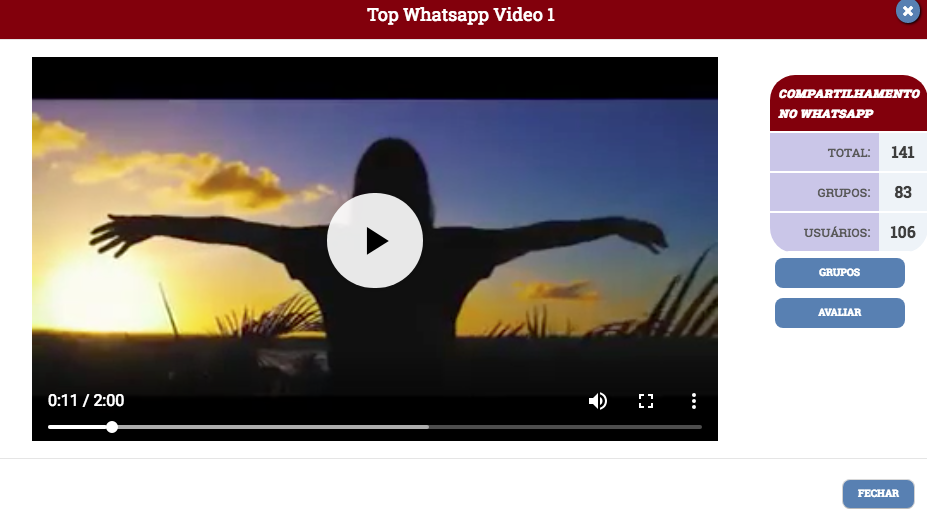
The video claims that Viviane Senna, sister of Formula One driver Ayrton Senna, would allow Bolsonaro to use a song that used to be played after Ayrton won races in his campaign materials. It was the top video on WhatsApp on Oct. 26, according to Eleições Sem Fake, and was shared in 83 groups by 106 users.
Lupa debunked that claim Oct. 27 after users flagged it on Facebook, where it amassed more than 3,500 shares. It was also uploaded to YouTube, where it had more than 3,000 views as of publication.

